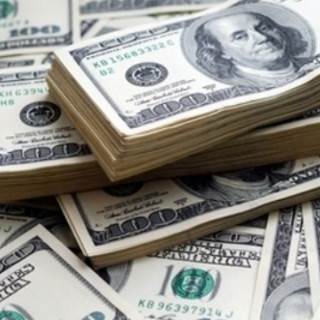


The US Dollar Index (DXY), which tracks the greenback against a basket of currencies, fell for the second straight day on Monday and continued to slide from its highest level since November 2022 reached last week.
The index maintained its negative bias through the first half of the European session and is currently hovering around the 108.70-108.65 area, down 0.25% for the day, although the fundamental backdrop warrants caution for bearish traders.
The US ISM Manufacturing PMI improved from 48.4 to 49.3 in December, showing signs of economic resilience and growth potential amid optimism over US President-elect Donald Trump's expansionary policies.
This, in turn, validated the Federal Reserve's (Fed) hawkish shift in December, which signaled that it would slow the pace of interest rate cuts in 2025, which kept the US Treasury bond yields higher. In fact, the 10-year US Treasury yield hit its highest since May 2 and supported the USD bulls.
Moreover, persistent geopolitical risks stemming from the prolonged Russia-Ukraine war and tensions in the Middle East, along with concerns about Trump's tariff plans, support prospects for some dip-buying around the safe-haven US dollar.
Hence, any subsequent USD dip might be seen as a buying opportunity and remain limited ahead of this week's important US macro data releases, including Friday's Nonfarm Payrolls (NFP). In the meantime, traders on Monday might take cues from the latest US Services PMI and Factory Orders data.
Source: FXStreet
The US Dollar Index (DXY) continued its strengthening for a second day and briefly hovered around 98.20 during the Asian session, driven by hawkish comments from Kansas City Fed President Jeffrey Schm...
The dollar headed for its worst week since late July on Friday (October 3rd) as the US government shutdown heightened uncertainty, while the yen weakened from this week's high as traders considered th...
The dollar weakened near a one-week low on Thursday as traders weighed the impact of the US government shutdown, while poor jobs data raised expectations that the Federal Reserve would cut interest ra...
The U.S. dollar slid to two-week lows against the yen on Wednesday after data showed private-sector jobs in the world's largest economy contracted last month, boosting expectations the Federal Reserve...
The dollar index fell to its lowest level in the session as U.S. corporate payrolls unexpectedly fell in September and traders increased bets on two interest rate cuts by the Federal Reserve this year...
The US Dollar Index (DXY) continued its strengthening for a second day and briefly hovered around 98.20 during the Asian session, driven by hawkish comments from Kansas City Fed President Jeffrey Schmid. He emphasized that the Fed must maintain...
Silver weakened early in the Asian session, hovering near $48.45 after briefly touching a 14-year high. The strengthening US dollar—along with rising US bond yields—made USD-denominated commodities more expensive for overseas buyers, pressuring...
Japanese stocks rise due to growing hopes that newly elected ruling-party leader Sanae Takaichi will take more aggressive fiscal steps to stimulate the economy. Heavy-industry and real-estate stocks lead gains. IHI rises 5.3% and Sumitomo Realty...
 Asian stocks surged to new highs, led by Japan's Nikkei 225, which surged more than 4% following the election of pro-stimulus lawmaker Sanae...
Asian stocks surged to new highs, led by Japan's Nikkei 225, which surged more than 4% following the election of pro-stimulus lawmaker Sanae...
 Hamas officials were in Egypt on Monday (October 6th) ahead of talks with Israel that the US hopes will lead to an end to the war in Gaza and the...
Hamas officials were in Egypt on Monday (October 6th) ahead of talks with Israel that the US hopes will lead to an end to the war in Gaza and the...
 The S&P 500 and Nasdaq Composite closed at record highs on Monday, spurred by optimism about increased mergers and acquisitions activity after...
The S&P 500 and Nasdaq Composite closed at record highs on Monday, spurred by optimism about increased mergers and acquisitions activity after...
 Euro Area Stock MarketEuropean stocks closed mostly lower on Monday as fresh political turmoil in France rekindled concerns of fiscal instability...
Euro Area Stock MarketEuropean stocks closed mostly lower on Monday as fresh political turmoil in France rekindled concerns of fiscal instability...